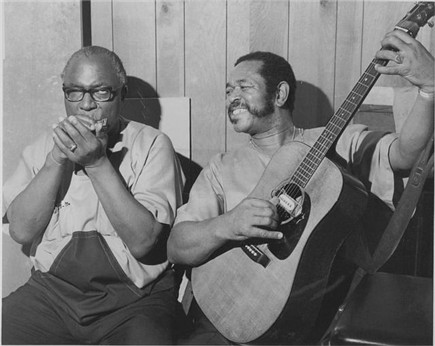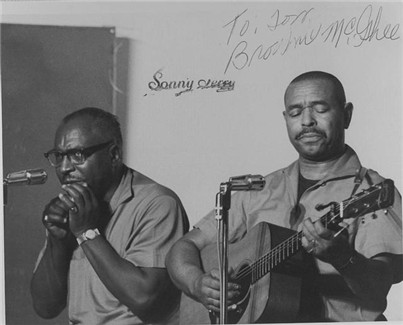
Sonny Terry (1911-1986) and Brownie McGhee (1915- 1996)
Things to Listen For
"Better Day" is a classic example of the blues, both in harmonic progression and structure. A standard blues is built on a repeating 12-bar harmonic progression, sometimes modified to fit within 8-bars or 16-bars. Usually these "bars", actually measures are in a duple meter such as 2/4 or 4/4. What makes these songs "blues" is the adherence to a standard harmonic progression. By representing each measure as a cel, and each harmony as a Roman Numeral signifying the pitch that is the root of the chord (I = do; IV = fa, etc.), the harmonies of a typical 12-bar blues can be diagrammed as follows:
To create variety, chords can be modified (thus one might subsititute a ii chord for a IV chord) and phrases can be stretched. In this recording a fine example of the 12-bar blues can be heard during the harmonica solo beginning at 1:02. The first verse of the solo is a strict 12-bar blues. In the second verse the space remains the same, but there are some chord modifications during the first third of the form. Similarly, in the sung verses you can hear the phrases stretched beyond the limits of an eight bar blues.
Another important idea that is typical of the blues is call-and-response, a simple device in which one person says/sings something and the other responds with the same material or a modified version of that material. This can occur through the use of the voice, as in this recording, or through an instrument.
